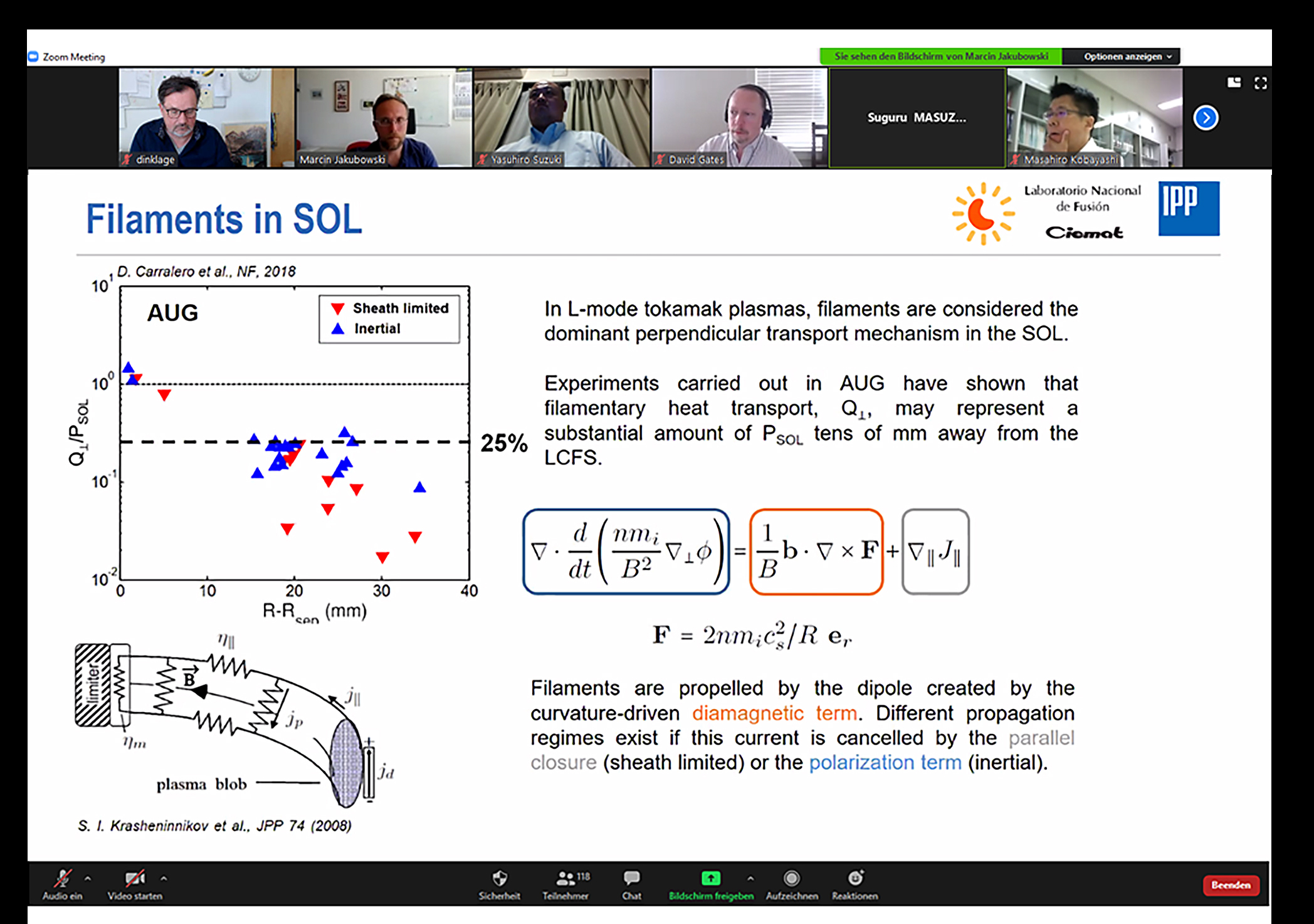Travel restrictions imposed by the COVID-19 pandemic are transforming, with pluses and minuses, scientific conferences around the world. Take the Coordinated Working Group Meeting (CWGM), an international event cohosted by the U.S. Department of Energy’s (DOE) Princeton Plasma Physics Laboratory (PPPL) that typically draws 30-or-40 participants to three-day gatherings that organize joint experiments on twisty fusion facilities called stellarators.
Travel restrictions this year have transformed the conference, originally scheduled for Kyoto, Japan, into 12 weekly hour-long video sessions that have drawn up to 130 scientists. “We’ve been stunned by the turnout,” said physicist Dave Gates, one of four conference organizers and head of stellarator research and also of advanced projects at PPPL. “It’s been a really fascinating experience and quite a shift in paradigms.”
Surprising turnout
The surprising turnout broadens research opportunities. “The added value is that we get a much wider attendance of experts who otherwise could not come,” said Andreas Dinklage, a conference organizer and EUROFUSION project leader for European contributions to the Wendelstein 7-X stellarator in Greifswald, Germany. “My view is that video conferencing improves information flow.”
Such events add a new dimension to research communications that is likely to continue. “Online conferences save travel time and expenses,” said Steve Cowley, PPPL director. “And the broadening of participation is very real.”
The CWGM conferences, which organizers headline as “Worldwide Stellarator Research Goes Virtual,” has some downsides as well. Notably missing are face-to-face chats that raise new issues and explore intriguing data. “You lose personal discussions,” Gates said. “When you meet for three days there are dinners and side conferences and you get to know people over time. There clearly are pluses and minuses to video conferencing, and we didn’t see how large the pluses could be.”
Major attractions
Major attractions include the participation of smaller institutions that otherwise would not attend and the opportunity for new collaborations. At one session, a researcher from the University of Wisconsin-Madison pointed out how the stellarator there contributes to understanding the puzzling transport of electrical filaments inside the device. “We brought this question to the experts,” Dinklage said, “and a colleague from Spain formed a group to survey the transport in other stellarators.”
Dinklage compares the potential pluses of video conferencing to changes wrought by the invention of the printing press by Johannes Guttenberg in the 15th Century. “Guttenberg improved the dissemination of hand-written books by many factors,” Dinklage said. “Today we know that this transition was a quantum jump in human communication. And looking at video conferences in the context of all things digital like blogs, YouTube, Zoom, etc., these conferences might have a comparable effect.”
Similar expansions are taking place in video events throughout the Laboratory. A two-week summer school that typically brings 40-or-so students to PPPL to learn about plasma physics this year attracted more than 600 Zoom attendees, said Arturo Dominguez, senior program leader in the Department of Science Education. And colloquia that have replaced face-to-face presentations with Zoom sessions regularly draw hundreds of PPPL researchers to wide-ranging discussions of scientific issues.
Possible factor
A possible factor behind increased attendance is not just the ease of online viewing, Gates said. “I think it is also the fact that people are trapped at home and have no choice but to do things remotely,” he said. “These remote conferences force us to formalize presentations much more than we would have otherwise, and the effort clearly takes more calendar time because we cannot have extended meetings while in different time zones.”
But the expanded communication that COVID-19 travel restrictions have opened up is likely to last. “We’re not giving up on these conferences or on face-to-face meetings,” Gates said. “Maybe we’ll have face-to-face planning sessions followed by video conferences. The widened participation that we’ve discovered is here to stay.”
Co-organizers of the weekly events are Yasuhiro Suzuki, associate professor at the National Institute for Fusion Science in Toki-City, Japan, and Enrique Ascasibar of the Centre for Energy, Environment and Technology Research (CIEMAT) in Madrid, Spain. Support for the conferences comes from participating countries with U.S. support provided by the DOE Office of Science.
PPPL, on Princeton University’s Forrestal Campus in Plainsboro, N.J., is devoted to creating new knowledge about the physics of plasmas — ultra-hot, charged gases — and to developing practical solutions for the creation of fusion energy. The Laboratory is managed by the University for the U.S. Department of Energy’s Office of Science, which is the single largest supporter of basic research in the physical sciences in the United States and is working to address some of the most pressing challenges of our time. For more information, visit energy.gov/science.
Original post https://alertarticles.info
